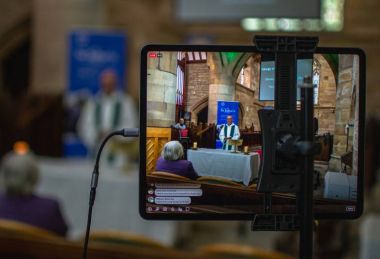
The next Archbishop of Canterbury after Justin Welby inherits a national Church in numerical meltdown and groaning under a bureaucratic burden.
On Thursday 5 December, the Church of England published its mission statistics for 2023. The Church’s all-age average weekly attendance, which includes Sunday and midweek attendance, was 693,000 people in 2023 – 598,000 adults and 95,000 children aged under 16.
The number of adults was 19 per cent lower than in 2019, though 4.5 per cent higher than in 2022. The number of children was 24 per cent lower than in 2019, though 4.9 per cent higher than in 2022.
The C of E has thus declined in numerical weekly attendance by more than a fifth since 2019.
The latest mission statistics came the day after think tank Civitas published a report on the C of E warning that it is overspending on ‘human resources’ (HR) bureaucracy and diversity officers at the expense of parishes.
The report – Restoring the Value of Parishes: The foundations of welfare, community, and spiritual belonging in England – by academic researcher and consultant, Esmé Partridge, found that a “managerial turn” in the Church in the past two decades has left ordinary parishes “struggling to survive”.
Her report said the Church’s 42 dioceses had taken on “large numbers of staff” since the turn of the millennium while merging parishes and reducing clergy numbers to cut costs.
These administrative positions include HR jobs and a series of “politicised roles” such as diversity, social justice, LGBT and net zero officers.
This trend means that “dioceses across the country now employ so many people that, on average, there is one administrator to every three-and-a-half priests”.
The report found that 21 per cent of diocesan spending is now going on administrative costs, almost double that of large charities such as Oxfam (10 per cent).
Civitas noted that the number of stipendiary incumbents – C of E ministers who are paid a salary – is also in decline in many dioceses, including the Diocese of Sheffield where there were 155 such ministers in 1999 but 83 will exist in 2025, marking a decline of 46 per cent.
The report stated: “These choices are not, it would seem, being made out of financial necessity: the Church Commissioners are the custodians of a £10 billion endowment fund which was originally instituted for the sole purpose of providing support for parishes.
“Why, then, is it not being spent on saving them?”
The report recommended that dioceses share back-office functions to cut costs, direct money to ordinary parishes to fund more ministers, and reduce the amount of “parish share” donations churches pay their dioceses every year.
The C of E tried to dismiss the report with a spokesman telling The Telegraph newspaper: “We don’t recognise the picture painted by this report which appears to fundamentally misunderstand how clergy are paid and ignore the essential front-line support dioceses provide to parishes across the country in everything from safeguarding to finance.
“Contrary to the image the report portrays, Church of England churches have seen notable growth in the last year – with overall congregations passing a million again in 2023 – a tribute to the faithfulness of clergy, parish volunteers and parishioners across England in sharing the good news of Jesus Christ and serving their communities.”
The spokesman’s statement about “overall congregations passing a million again in 2023” came from the latest mission statistics: “The Church of England’s Worshipping Community – its number of regular worshippers – was 1,007,000 people in 2023.”
According to the commentary on the statistics: “The Worshipping Community of a church is defined as those people who attend worship regularly, once a month or more (whether in-person or ‘at home’).”
The C of E spokesman neglected to mention that the total Worshipping Community of regular worshippers in 2023 was 10 per cent lower than in 2019, though 2.5 per cent higher than in 2022.
He also neglected to explain that the people who keep a frontline parish church going are not those who might attend once a month or watch the service online but those who attend the church in person week in, week out, who contribute financially and take on the necessary and demanding volunteer jobs.
The mission statistics showed clearly that the number of weekly attenders has plummeted since 2019.
Welby’s successor cannot arrest the numerical decline. That is a demographic reality due to the fact that the majority of people who attend C of E churches are over 60.
But he or she could try to tackle the centralising managerial culture that has taken over the C of E and work to relieve the bureaucratic burden on frontline parishes. That could release parishes for more effective evangelism.
Julian Mann is a former Church of England vicar, now an evangelical journalist based in Lancashire.